10 best epic movies of all time, ranked
Epic movies have provided audiences with cinematic spectacles since the art form began. These large-scale features include some of the most ambitious movies ever made. They tell marvelous stories against extravagant backdrops teeming with life thanks to meticulous attention to costumes, impeccable casting choices, and inspiring musical scores.
From genre classics like Lawrence of Arabia to recent blockbusters like Oppenheimer, the greatest epic films of all time weave tales of unparalleled scale, making history along the way. These essential epics span a variety of subgenres and time periods, ensuring that there’s something for every type of viewer.
10. The Ten Commandments (1956)
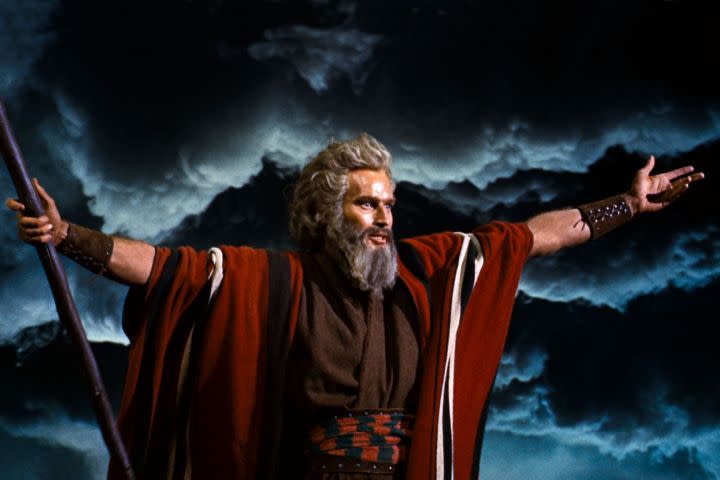
Director Cecil B. DeMille’s The Ten Commandments remains one of the most popular movies of all time based on box office earnings, with the 1956 epic religious drama depicting the story of the biblical figure Moses (Charlton Heston). The film was based on Dorothy Clarke Wilson’s 1949 novel Prince of Egypt and follows Moses’ journey toward liberating the enslaved Hebrews before leading them to the promised land and receiving the Ten Commandments along the way.
Undoubtedly DeMille’s magnum opus, The Ten Commandments benefitted from being filmed on location in Egypt, Mount Sinai, and the Sinai Peninsula, where one of the largest exterior sets to ever exist was built. The awe-inspiring sets were complemented by groundbreaking special effects, including the parting of the Red Sea. Even audiences who aren’t fans of faith-based dramas will likely appreciate the fantastic efforts that went into creating this epic.
9. Spartacus (1960)

Kirk Douglas stars as the title character in director Stanley Kubrick’s epic historical drama Spartacus. It revolves around the protagonist’s experiences as a slave who’s sold to a gladiator. After learning how to fight and kill in the arena, Thracian Spartacus eventually rebels against his owner, inspiring other slaves from other towns to do the same and eventually leading an uprising against Rome.
Despite being a project where he did not have full artistic control, Spartacus ended up being one of the most significant films from Kubrick’s career, not just for its monumental scale, but for its historical role in helping end the blacklisting for the Hollywood Ten. Today, the thrilling spectacle endures as an incredible saga of freedom and courage, with the character’s battle cry, “I am Spartacus,” cementing its place in pop culture.
8. All Quiet on the Western Front (1930)
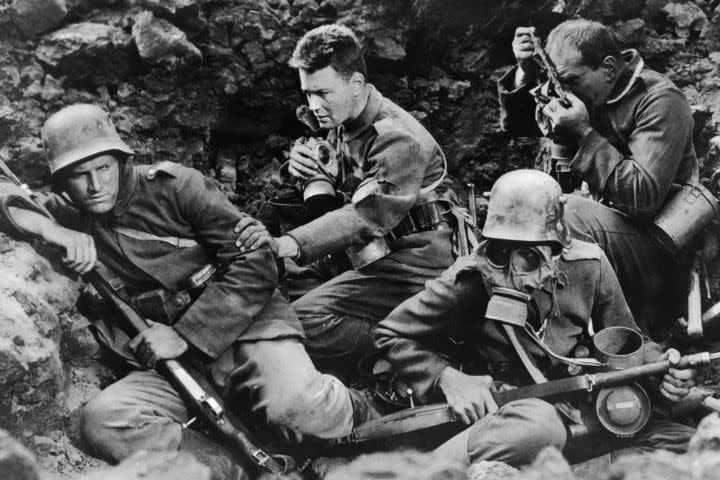
Although its more popular Netflix remake may be familiar to viewers now, the 1930 version of All Quiet on the Western Front is arguably still better, at least when it comes to faithfulness to the source material. Directed by Lewis Milestone, the pre-Code anti-war film is based on the 1929 novel by Erich Maria Remarque. It follows a group of German schoolboys who become soldiers during World War I and, led by the earnest Paul B?umer (Lew Ayres), face the brutal realities of warfare.
The classic war movie challenges notions of heroism and glorification associated with combat, which is much more daring and remarkable considering when it was released. Idealism spurred by propaganda is represented by the cheering masses and patriotic marches off to battle, and is contrasted with the unforgiving trench warfare and unflinching combat sequences.
7. Gone with the Wind (1939)
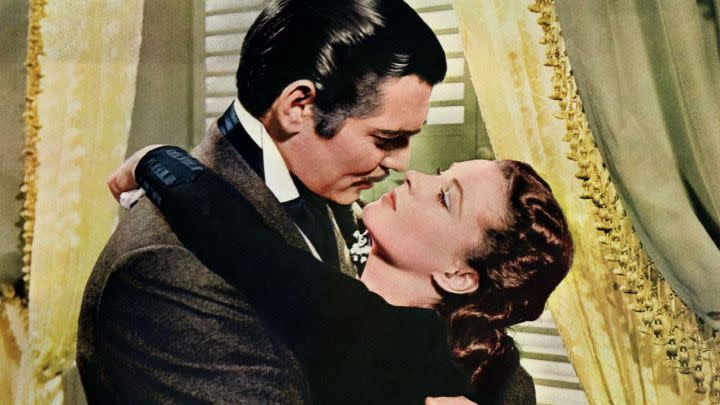
Director Victor Fleming’s Gone with the Wind is an epic historical romance that couldn’t be made again today due to its problematic portrayal of slavery. The 1939 film is centered on the story of a Southern belle, Scarlett O’Hara (Vivien Leigh), who lives an enviable life on a Georgia plantation and soon becomes romantically entangled with the already-married Ashley Wilkes (Leslie Howard). She eventually gets married to the charming Rhett Butler (Clark Gable).
As one of the longest Hollywood movies ever made, Gone with the Wind chronicles different stages of Scarlett’s life, showcasing how it’s inevitably transformed not just by her romantic interests, but by the Civil War and Reconstruction eras. The film is full of lush imagery featuring elegant mansions where fancy parties are held for people wearing glamorous outfits. In the background, however, are the one-dimensional Black servants.
6. Ben-Hur (1959)
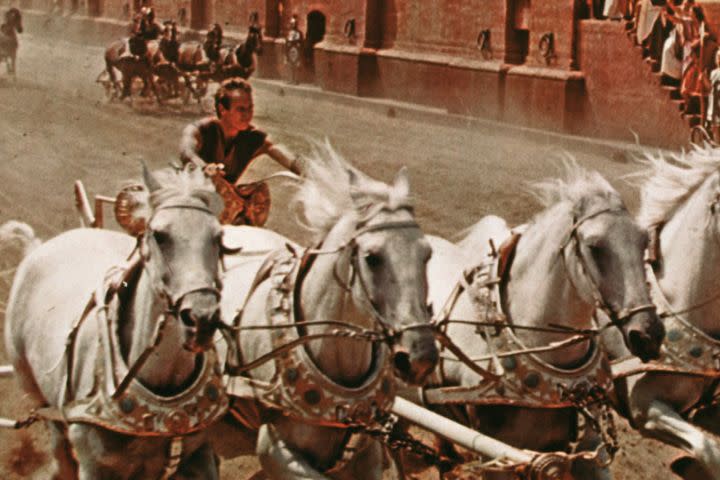
Ben-Hur is a true standout in the genre that is still counted among the greatest cinematic spectacles ever made. Directed by William Wyler and based on Lew Wallace’s 1880 novel Ben-Hur: A Tale of the Christ, the 1959 religious epic follows the life of Judah Ben-Hur (Charlton Heston). Once a Jewish prince, the protagonist is forced into slavery after a gross betrayal that ends with the persecution of his family. He soon climbs the ranks to seek vengeance.
The familiar tale of revenge is set against a sweeping backdrop that is the Roman Empire. Ben-Hur made good use of its $15 million budget to create the largest set pieces cinema had seen up to that point. Hundreds of workers tirelessly created thousands of costumes, statues, and friezes for the film. There were also 200 camels, 2,500 horses, and 10,000 extras present for the shooting, which lasted 12 to 14 hours daily and would take almost eight months to complete. On top of all of that is the iconic nine-minute chariot scene, which was a cinematic triumph by itself, and helped the film become an indelible part of history.
5. Oppenheimer (2023)

Oppenheimer is already proving to be among director Christopher Nolan’s best works, with the 2023 epic biographical thriller earning 13 Oscar nominations this year. The film is centered on theoretical physicist J. Robert Oppenheimer (masterfully played by Cillian Murphy) and his journey to becoming the “father of the atomic bomb.” Chronicling his winding path in academia, his role in the Manhattan Project, and his downfall in front of the Senate, it’s Nolan’s longest film to date, clocking in at three hours.
Every moment of its 180-minute runtime is well-spent, as Oppenheimer is a visually stunning feast that weaves its separate storylines together with ease. Nolan’s use of the IMAX and Panavision cameras results in an immersive work of art that also features a phenomenal ensemble cast who all lived together in New Mexico while shooting. There are also notable practical effects, particularly the use of actual explosives to demonstrate the Trinity nuclear test.
4. Ran (1985)

Legendary Japanese director Akira Kurosawa had adapted Shakespeare’s works in the past, but it’s 1985’s Ran that is remembered as a sprawling epic that portrayed the source material like never before. Based on The Bard’s King Lear, Ran, one of the best Japanese movies ever, transports the story to feudal Japan, where the aging warlord Hidetora Ichimonji (Tatsuya Nakadai) decides to divide his kingdom among his three sons. Eldest son Taro (Akira Terao) is chosen to rule, while Jiro (Jinpachi Nezu) and Saburo (Daisuke Ryu) are tasked with commanding their own castles. Saburo rebels against his father’s choices and causes chaos within the kingdom.
Ran‘s story about the consequences of unchecked ambition is told through gorgeous landscapes full of violent warfare. The film benefits from Kurosawa’s masterful direction, which makes every well-choreographed siege and massive battle feel like a well-made symphony. The movie is also striking thanks to its use of vibrant colors, with contrasting hues making each moment all the more intense and unforgettable.
3. Titanic (1997)
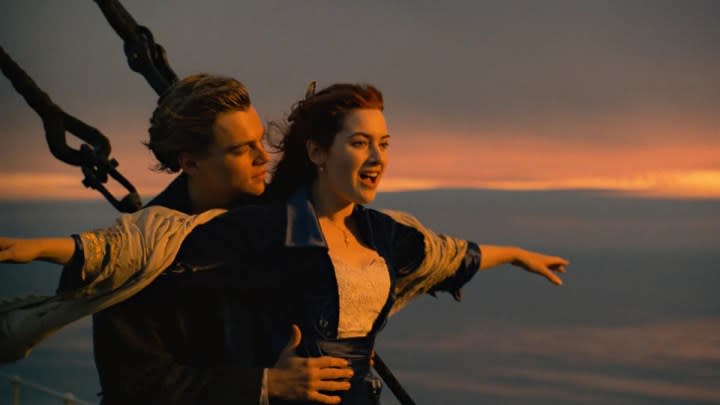
Titanic is an epic romance movie that needs no introduction. Not just one of the best movies of the 1990s, but often cited alongside the greatest of all time, James Cameron’s box office blockbuster captivated audiences and critics around the world with its story inspired by the sinking of the real-life RMS Titanic. It tells the fictional love story of Jack Dawson (Leonardo DiCaprio) and Rose DeWitt Bukater (Kate Winslet), two passengers from different societal classes who form a deep connection.
From the grandeur of the ship’s interiors to the cutting-edge recreation of the ship’s sinking, it was immediately clear when it first premiered that Cameron made excellent use of the huge $200 million production budget for the movie. DiCaprio and Winslet’s off the charts on-screen chemistry also contributed to the film’s success, as it’s ultimately remembered for being an emotional and tragic love story for the ages.
2. The Godfather: Part II (1974)

Director Francis Ford Coppola’s The Godfather trilogy is among the best and most influential works in film, but many believe it peaked with The Godfather: Part II. Still based on the eponymous 1969 novel by Mario Puzo, Part II serves as both a sequel and prequel for the 1972 film, following two storylines. The first arc focuses on the new and inexperienced Don of the family, Michael Corleone (Al Pacino), and the second shows the rise of his father, Vito Corleone (Robert De Niro), from his roots in Sicily to his success in New York City.
With an even longer runtime than the first movie, The Godfather: Part II builds on the already expansive gangster story to create a truly epic mob film. The Corleone family’s empire feels both grand and vulnerable under Michael’s leadership, and Vito’s backstory only adds more depth and nuance to the intricate narrative. The structure of these two intergenerational arcs make the movie feel like an extravagant drama that certainly exceeds its predecessor.
1. Lawrence of Arabia (1962)
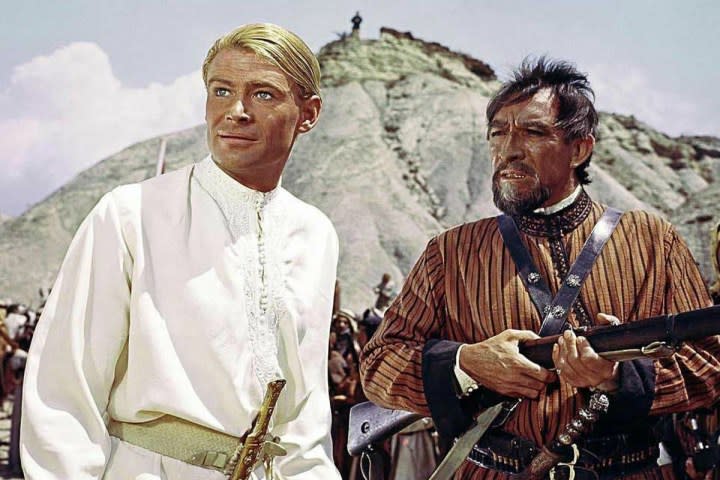
The film that has undoubtedly become synonymous with the epic genre, director David Lean’s Lawrence of Arabia is a renowned biographical drama centered on British Lieutenant T.E. Lawrence (Peter O’Toole). It depicts the character’s transformative arc from initially serving as a liaison to becoming involved in the rebellion against the Ottoman Empire during the First World War. It specifically focuses on the attacks against Aqaba and Damascus, which are shown in astounding scale.
Lawrence of Arabia relies heavily on practical effects and an unimaginable level of meticulousness and skill to choreograph its huge scenes set in the Arabian desert. Critical moments like the guerilla ambush and the attack on Aqaba helped the film become the genre-defining masterpiece that it is. Of course, it’s also an intimate character study that explores its protagonist’s inner conflict as he struggles to reconcile his superiors’ orders with the reality in front of him.
